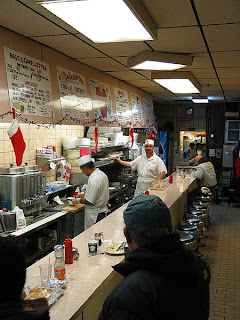Some time ago I discussed a few of the names and the chemistry from the distant past that went into making photography the "people's art"--an art form everyone in the civilized world can use to create and enjoy. Thanks to these persistent pioneers, anyone who can aim through a viewfinder and press a button can, if not create art, at least capture the moment. And, thanks to Edwin Land who pioneered Polaroid technology, the results of that effort can be held in your hand in about a minute. Now,with digital photography or video imaging, you can view your creative genius in just seconds. Talk about your "instant gratification." Can you recall the first time you ever held a Polaroid print or peered at the back of a digital camera gasping in amazement as the image appeared on the tiny screen? Showing this to someone who had never seen a digital camera before was one of the greatest joys in owning one. Fox Talbot and Louis Daguerre, if not rolling over in their graves, must surely be blinking their eyes in amazement.
 |
| "You push the button, we do the rest." |
As much as we owe to these two men, and others, their efforts, despite some commerical applications, were largely along the line of what we could call today, "basic research." The man who really put photography in the hands of the common man was George Eastman. And the marvelous little gadget which he used to do it is now, (February, 2012) 112 years old. Eastman called it the "Brownie." The name originally came from Canadian author Palmer Cox's "Brownie" elves, cartoon characters that once adorned the plain little cardboard box camera. The first Brownie camera cost just one dollar (the equivalent of $25 today) and came already loaded with film allowing approximately six to eight exposures. Once the pictures were taken, you mailed the whole thing back to Eastman Kodak for processing. In a week or two, you got back your photos and an identical camera once more loaded and ready to go. And, while this system went a long way in "democratizing" and popularizing photography, one didn't exactly go around snapping off pictures of any momentary creative impulse. You were creating precious, documentary treasures. People dressed up in their Sunday best, squinted into the bright sun, posed stiffly in neat little rows, and "said cheese." Click-Clock.
 |
| The Fiesta R4, the last of the Brownies |
Improvements came quickly, more film, wooden cameras you could load and unload yourself (the post office must have been grateful for that development), better lenses, faster film, flash attachments, bigger pictures, color pictures, plastic cameras, flash cubes, flash bars, built in flash, and always, lower and lower prices (adjusted for inflation, of course). Their names were as colorful as the pictures they took--the Hawkeye (below, right), Target, Vecta, and the last Brownie, the Fiesta R4 (above), which was made in 1970. By that time the best cameras were no longer made in America nor bore the totally fabricated name, "Kodak." (More recently, it appears that name may soon go the way of the Brownie.)
 |
| The 1950s Hawkeye Brownie, my own first camera |
The 35mm format invaded, first from Germany, aimed at "serious" photographers, then in ever greater numbers and ever more simplified forms, from Japan came names like Nikon, Yashica, Minolta, and Canon aimed at everyone else. And, while the lovable old Brownies were quite simple to operate, it was also very easy to take bad pictures at the click of a button. I know, I did so quite often. Later, replacing the Brownies, came the "brainy" cameras with their high-speed, highly-forgiving color film we called "idiot cameras" (any idiot could use one and seldom take a "bad" picture). While decades ahead in design and technology, they somehow just didn't seem nearly as friendly, lovable, or wholesome as those which Eastman wrought. From an artist who created his first "art" with an Kodak Brownie--Happy Birthday, old buddy, you don't look a day over sixty!














































